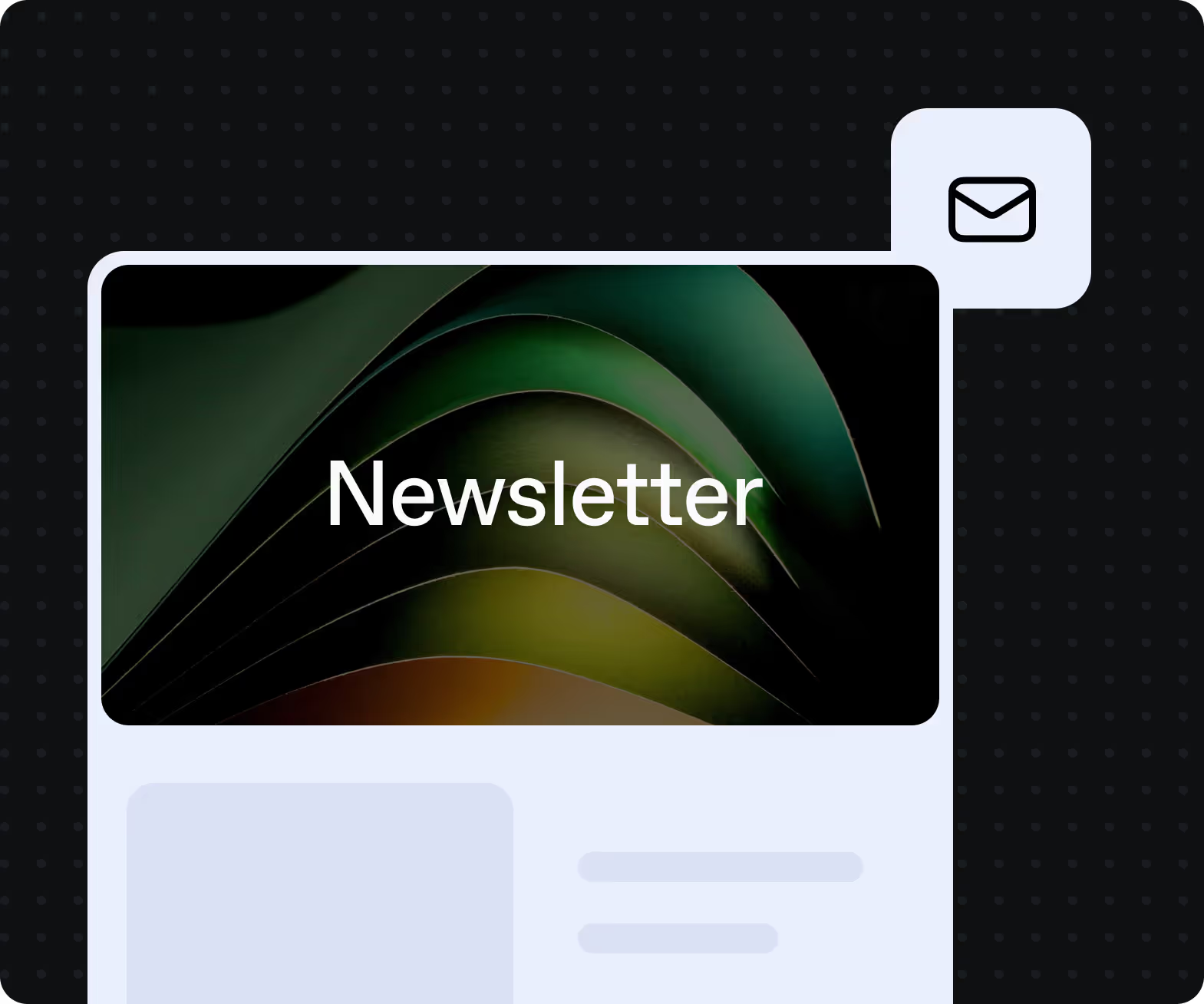The OWASP Top 10 for LLM Applications has become the most widely referenced framework for understanding and mitigating risks in generative AI systems. The 2025 edition brings important updates that reflect the growing complexity of real-world threats: from model training vulnerabilities to deployment-stage attacks and misuse in production environments.
Lakera has been closely involved in shaping this evolving security landscape. We’ve contributed to several OWASP initiatives, including the Top 10 for LLMs (2025) and the AI Vulnerability Scoring System (AIVSS), helping define how risks should be prioritized and addressed in production-grade AI systems.
Lakera’s alignment with the OWASP framework goes beyond theory. We’ve operationalized it across our entire security approach:
- Lakera Red enables automated risk evaluations and advanced red teaming throughout the development lifecycle.
- Lakera Guard delivers real-time runtime protection with multilingual threat detection, content filtering, and custom guardrails.
Together, they help teams ship secure, compliant, and trustworthy GenAI applications, backed by the industry’s leading standards.
TL;DR
-db1-
Lakera helps secure generative AI applications by aligning with the OWASP Top 10 for LLMs (2025). Our focus spans two key stages:
- During development, Lakera Red simulates real-world attacks to identify risks like prompt injection, training data poisoning, and permission abuse.
- At runtime, Lakera Guard stops threats such as prompt attacks, data leakage, malicious content, and output manipulation using real-time classifiers and guardrails.
While we provide strong coverage across most OWASP risks, certain areas, like supply chain vulnerabilities, fall outside the scope of runtime protections and are only partially addressed through model behavior evaluation.
-db1-
OWASP 2025 and the AI Security Lifecycle
The 2025 OWASP LLM Top 10 reflects a key insight—
LLM risks don’t just show up at runtime. They emerge across the entire AI lifecycle, from the moment you ingest training data to how the model responds to user input in production.
This means that securing LLMs requires both proactive and reactive defenses. You need to uncover vulnerabilities before deployment and stay protected once your application is live.
That’s where Lakera comes in:
- Lakera Red empowers security and ML teams to uncover hidden issues during development using systematic evaluations and adversarial testing.
- Lakera Guard enforces runtime protection by scanning inputs and outputs, detecting malicious patterns, and blocking harmful or non-compliant behavior in real time.
In the next section, we’ll map each OWASP risk to Lakera’s coverage, so you can see exactly how these threats are addressed across development and deployment.
OWASP Top 10 for LLMs (2025): Lakera’s Coverage Breakdown
LLM01: Prompt Injection
Risk Impact: Bypasses safety measures, exposes sensitive data, and enables unauthorized system access.
<div class="table_component" role="region" tabindex="0">
<table>
<thead>
<tr>
<th>Coverage</th>
<th>Level</th>
<th>Description</th>
</tr>
</thead>
<tbody>
<tr>
<td>Lakera Guard</td>
<td>🟢 Strong</td>
<td>Prompt Attack detector identifies direct, indirect, and jailbreak attempts in real time.</td>
</tr>
<tr>
<td>Lakera Red</td>
<td>🟢 Strong</td>
<td>Continuous red-team testing for injection vulnerabilities across attack vectors.</td>
</tr>
</tbody>
</table>
</div>
**💡 Want a deeper dive into how attackers exploit LLMs? Read our guide to prompt injection.**
LLM02: Sensitive Information Disclosure
Risk Impact: Leads to PII leakage, proprietary data exposure, and privacy violations.
<div class="table_component" role="region" tabindex="0">
<table>
<thead>
<tr>
<th>Coverage</th>
<th>Level</th>
<th>Description</th>
</tr>
</thead>
<tbody>
<tr>
<td>Lakera Guard</td>
<td>🟢 Strong</td>
<td>Data Leak detector identifies PII patterns; custom guardrails and regex enable precise proprietary data protection.</td>
</tr>
<tr>
<td>Lakera Red</td>
<td>🟢 Strong</td>
<td>Systematic evaluation of data exposure scenarios, including PII extraction.</td>
</tr>
</tbody>
</table>
</div>
**💡 Learn how protecting personal data is evolving in the age of GenAI in our post o personally identifiable information risks.**
LLM03: Supply Chain
Risk Impact: Compromised models, vulnerable dependencies, and licensing issues.
<div class="table_component" role="region" tabindex="0">
<table>
<thead>
<tr>
<th>Coverage</th>
<th>Level</th>
<th>Description</th>
</tr>
</thead>
<tbody>
<tr>
<td>Lakera Guard</td>
<td>⚪ Not Applicable</td>
<td>Outside runtime guardrail scope.</td>
</tr>
<tr>
<td>Lakera Red</td>
<td>🟡 Limited</td>
<td>Can evaluate model behavior but not supply chain integrity.</td>
</tr>
</tbody>
</table>
</div>
LLM04: Data and Model Poisoning
Risk Impact: Introduces bias, backdoors, and compromised output quality.
<div class="table_component" role="region" tabindex="0">
<table>
<thead>
<tr>
<th>Coverage</th>
<th>Level</th>
<th>Description</th>
</tr>
</thead>
<tbody>
<tr>
<td>Lakera Guard</td>
<td>🟢 Strong</td>
<td>Prompt Attack detector identifies poisoning triggers; custom guardrails detect harmful outputs.</td>
</tr>
<tr>
<td>Lakera Red</td>
<td>🟢 Strong</td>
<td>Evaluates model behavior for poisoning indicators and backdoor activation.</td>
</tr>
</tbody>
</table>
</div>
**💡 Prompt engineering and adversarial inputs often expose poisoned behaviors. See our advanced prompt engineering guide to understand the techniques attackers use, and how to counter them.**
LLM05: Improper Output Handling
Risk Impact:Enables remote code execution (RCE), XSS, SQLi, and phishing through unsanitized outputs.
<div class="table_component" role="region" tabindex="0">
<table>
<thead>
<tr>
<th>Coverage</th>
<th>Level</th>
<th>Description</th>
</tr>
</thead>
<tbody>
<tr>
<td>Lakera Guard</td>
<td>🟡 Limited</td>
<td>Can detect suspicious input patterns, but full prevention requires proper system integration design.</td>
</tr>
<tr>
<td>Lakera Red</td>
<td>🟢 Strong</td>
<td>Tests for dangerous output patterns including executable code and injection payloads.</td>
</tr>
</tbody>
</table>
</div>
LLM06: Excessive Agency
Risk Impact: Over-permissioned systems, unauthorized actions, and privilege escalation.
<div class="table_component" role="region" tabindex="0">
<table>
<thead>
<tr>
<th>Coverage</th>
<th>Level</th>
<th>Description</th>
</tr>
</thead>
<tbody>
<tr>
<td>Lakera Guard</td>
<td>🟡 Limited</td>
<td>Primarily a design/architecture issue; Prompt Attack detector identifies exploitation attempts.</td>
</tr>
<tr>
<td>Lakera Red</td>
<td>🟢 Strong</td>
<td>Evaluates agent behavior and permission boundaries through systematic testing.</td>
</tr>
</tbody>
</table>
</div>
**💡 To learn more about securing agentic AI systems, explore Lakera’s Guide to Securing AI Agents in Production, packed with tactical guidance and grounded in real deployments.**
LLM07: System Prompt Leakage
Risk Impact: Exposes internal functionality, rules, and security controls.
<div class="table_component" role="region" tabindex="0">
<table>
<thead>
<tr>
<th>Coverage</th>
<th>Level</th>
<th>Description</th>
</tr>
</thead>
<tbody>
<tr>
<td>Lakera Guard</td>
<td>🟢 Strong</td>
<td>System prompt leakage defenses prevent extraction in real-time.</td>
</tr>
<tr>
<td>Lakera Red</td>
<td>🟢 Strong</td>
<td>Systematic testing for prompt extraction using advanced techniques.</td>
</tr>
</tbody>
</table>
</div>
LLM08: Vector and Embedding Weaknesses
Risk Impact: Unauthorized RAG data access, cross-context leaks, and embedding-based attacks.
<div class="table_component" role="region" tabindex="0">
<table>
<thead>
<tr>
<th>Coverage</th>
<th>Level</th>
<th>Description</th>
</tr>
</thead>
<tbody>
<tr>
<td>Lakera Guard</td>
<td>🟢 Strong</td>
<td>Data Leak detector protects PII and embedding data; custom guardrails for context-specific protection.</td>
</tr>
<tr>
<td>Lakera Red</td>
<td>🟡 Limited</td>
<td>Can test RAG-accessible vulnerabilities but with limited scope.</td>
</tr>
</tbody>
</table>
</div>
LLM09: Misinformation
Risk Impact: Generates false information, hallucinations, or biased outputs that affect decision-making.
<div class="table_component" role="region" tabindex="0">
<table>
<thead>
<tr>
<th>Coverage</th>
<th>Level</th>
<th>Description</th>
</tr>
</thead>
<tbody>
<tr>
<td>Lakera Guard</td>
<td>🟢 Strong</td>
<td>Content Moderation detector identifies harmful or biased outputs; custom guardrails enforce factuality standards.</td>
</tr>
<tr>
<td>Lakera Red</td>
<td>🟢 Strong</td>
<td>Systematic evaluation of factual accuracy, groundedness, and bias patterns.</td>
</tr>
</tbody>
</table>
</div>
LLM10: Unbounded Consumption
Risk Impact: DoS attacks, resource exhaustion, model theft, and financial impact.
<div class="table_component" role="region" tabindex="0">
<table>
<thead>
<tr>
<th>Coverage</th>
<th>Level</th>
<th>Description</th>
</tr>
</thead>
<tbody>
<tr>
<td>Lakera Guard</td>
<td>🟢 Strong</td>
<td>Custom guardrails detect suspicious usage patterns and potential abuse indicators.</td>
</tr>
<tr>
<td>Lakera Red</td>
<td>🟢 Strong</td>
<td>Comprehensive testing for resource exhaustion, model extraction, and consumption-based attacks.</td>
</tr>
</tbody>
</table>
</div>
**💡 Curious how red teaming for GenAI differs from traditional pen testing? Read how we’re redefining AI red teaming to meet the unique demands of LLM security.**
Key Takeaways
The most effective AI security strategies address vulnerabilities before, during, and after deployment. Here’s how Lakera enables that level of coverage:
- Start early with automated risk evaluations.
- Use Lakera Red to uncover vulnerabilities in model behavior, data handling, and system interactions before they make it into production.
- Integrate continuous red teaming across the lifecycle.
- Threats evolve quickly. Lakera Red helps you stay ahead with systematic, real-world testing tailored to your specific use case.
- Translate findings into runtime protection.
- Turn red team insights into targeted defenses using Lakera Guard’s custom guardrails and regex-based detectors.
- Protect across languages and obfuscation techniques.
- Lakera Guard operates natively across languages and encodings, ensuring multilingual security by default, not as an afterthought.
- Build domain-specific controls for high-stakes environments.
- Whether you’re handling financial data, education records, or internal IP, Lakera makes it easy to create guardrails tuned to your risk profile and compliance needs.
What’s Next
Whether you’re building GenAI apps from scratch or scaling to production, Lakera helps you stay secure at every step.
- Explore Lakera Guard to protect live systems with real-time input/output filtering.
- Talk to us about Lakera Red if you're ready to test your app like an attacker would.
- Or try hacking GenAI apps yourself in Gandalf, the world’s largest distributed network of AI hackers and the most fun game out there.

.svg)





